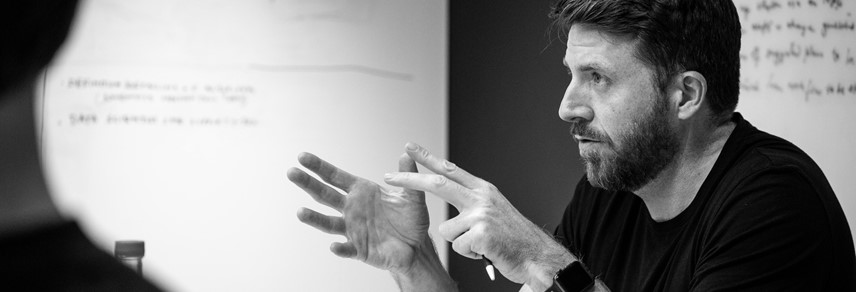
FOSTERING GREAT CORPORATE CONTENT HABITS ACROSS TEAMS DURING LOCKDOWN
Paul Williams, Speak Media’s head of planning & production, talks to senior communications leaders on the importance of internal comms and how to maintain effective connections when working remotely.
It is perhaps harder than ever for content teams to stay connected. The shared space and routine of an office helped bolster a sense of strategy and purpose – so how can this be sustained when team members are working from home?
We spoke to content team leaders in our network to find out how they have maintained a high standard of corporate content despite the setbacks and difficulties of the last year.
Their concerns are myriad: how to get team leadership right; what tools can be used to help; ways of maintaining creativity; concerns over losing the sense of ‘togetherness’ when working remotely, and much more. But each leader highlighted how building certain habits can help them stay connected – and fill content calendars with stories that make an impact.
1. Start conversations
Connecting with different people in your industry is often a prompt for a great story idea or interesting viewpoint. But, in a more remote world, we need to find new ways to enable conversations with people across our networks. As Tim Malone, group media manager, G4S told us: “Never stop finding new people to talk to - especially when you’re physically cut off from your colleagues. That’s our key to finding great stories at G4S, and we’re spoilt for choice with half a million employees across the world.”
In fact, comms leaders can engineer ways to ensure that their content teams are starting conversations. “Our content meetings always start with each team member talking about somebody new they’ve had a chat with, and any story ideas that came from it,” added Tim.
“Speaking to new people keeps things fresh, taps into different perspectives and you’ll always learn something. If you’re struggling for inspiration - open up your people directory, find a name you don’t recognise and pick up the phone. You may strike gold.”
2. Formalise your processes
Talking about internal processes might not be the most thrilling part of your content conversations – but it’s essential if you want to guarantee a consistent high-quality output that’s aligned with your goals. By setting in stone the processes that make your team great, you can make sure your team stays great.
“Document and implement your editorial processes,” said Luke O’Neill, former senior communications officer at NSW Health, who is now owner of his own agency, Genuine Communications. “Leave wiggle room for creativity. But make sure everyone understands good interviewing, fact-checking, attribution and approval. This is especially important, now many content teams are working remotely.”
3. When it comes to brainstorming, fail fast
Kristina Blissett, head of group communications at Coats, highlighted the importance of supporting colleagues’ creativity and wellbeing while working from home. “It is hard to replace the spontaneous brainstorming with colleagues across the desk which develops a passing moment of storyline inspiration into an absolute gem. So, content in development needs to fail fast,” she said.
“If it is taking too long to work up, enable the scarce and pressurised comms resource to move on quickly elsewhere. Communications professionals have effectively been operating in crisis mode for nearly a year and burnout is knocking more and more loudly at the door. Struggling out of PJs and getting ‘waist-up dressing’ ready for video calls may be a challenging enough delivery objective on some days, so a close and supportive group of colleagues is vital. Regular dashes of humour are highly effective stress relievers and energisers – as is keeping things in perspective.”
4. Be economical with your comms
At the start of the pandemic, corporates were keen to get their message out there, and with good reason – there were a lot of very worthwhile stories to be told and things to be said.
But, as Paul Carter, corporate communications consultant at Aberdeen Standard, advises, “as time has worn on, I also think we’ve seen the importance of being economical with communications. People are having to navigate such a variety of professional and personal challenges in their lives just now – and sometimes too much information only serves to add to that.”
5. Encourage the team to open up to new experiences – and do so yourself!
The paradox of Covid is that while the experience of the pandemic is a strange new one, the result – sitting at home all day – does very little to take us out of our comfort zones. However, it’s essential for creativity to flow. Dominic Collard, former head of content at GoCardless, has a way of challenging this drudgery. “At the start of the pandemic I was made redundant and went freelance. With the control over my hours, I decided to do some volunteering - for a walking group and more recently as a volunteer vaccinator with the St John Ambulance. It was never meant to be an exercise in sparking creativity, but it has been."
“Talking and working with a huge variety of people I would never normally have been in touch with has given me new perspectives, new empathies, new education. I’ve found that’s all unlocked more creativity and new ideas.”
In conclusion, habits, routines and processes may have reputations as being barriers to innovation and inspiration – but in our experience they have had just the opposite effect. When approached thoughtfully and creatively, habits that underpin content creation can help prompt new ideas, enable us to stay purposeful – and keep teams connected.
Paul Williams is head of planning & production at Speak Media.



